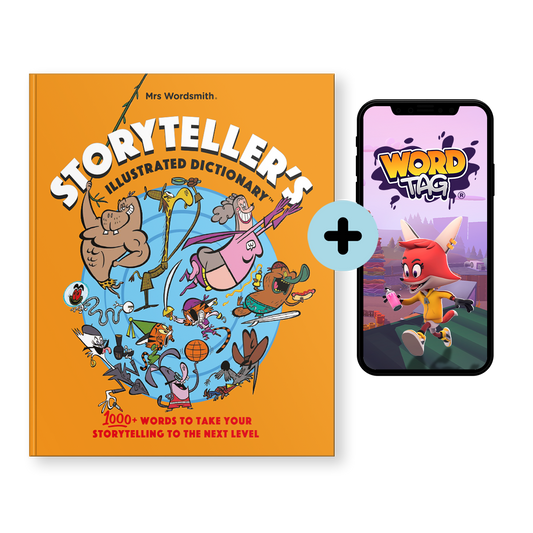Reading difficulties, such as dyslexia, can pose significant challenges for children, often affecting their ability to process and retain information. However, research shows that pairing words with illustrations can unlock powerful learning benefits, particularly for children with reading difficulties [1]. In this blog, we lift the lid on visual learning and the significant impact it can have on helping children learn how to read.
Table of contents:
- The Science Behind Visual Learning
- Why Illustrations Are So Effective
- Illustrations in Action: A Dyslexia-Friendly Solution
- Conclusion
The Science Behind Visual Learning
The human brain processes information through two distinct channels: the verbal channel, which handles language and words, and the visual channel, which interprets images and other visual stimuli. While these systems function independently, they can work together to enhance learning. When verbal and visual inputs align—such as hearing a word while seeing an illustration depicting what that word means—information is processed more effectively, creating a richer mental representation of the word’s concept. For children with dyslexia, who often experience limitations in verbal working memory, this dual-channel approach is especially valuable. Illustrations act as cognitive aids, reducing the strain on verbal processing while reinforcing comprehension. This makes visual content an essential tool for overcoming reading challenges.
Why Illustrations Are So Effective

Compared to other visual aids such as photographs, illustrations offer several unique advantages:
- Simpler to process: Unlike photographs, illustrations can highlight iconic features of objects or actions without overwhelming the viewer with unnecessary details [2]. This streamlined approach makes it easier for children to map words to their meanings.
- More engaging: Without the constraints of capturing things as they really are, illustrations can be far more vibrant, playful and silly than photos. As a result, they capture attention and make learning new words more enjoyable. At Mrs Wordsmith, we have a cast of adorable characters that feature in our products. Their hilarious antics aren’t just funny – they’re a tried-and-tested way of helping children to engage with and remember new words.
- More memorable: Linking words to illustrations enhances recall by engaging both verbal and visual memory pathways simultaneously.
These benefits are particularly significant for children with dyslexia, who often rely on visual learning strategies to compensate for difficulties they have in decoding.
Illustrations in Action: A Dyslexia-Friendly Solution
When verbal working memory becomes overloaded—a common occurrence for children with dyslexia—illustrations can step in to lighten the cognitive load. By breaking down complex learning objectives into manageable components supported by visuals, children can achieve greater success in reading tasks. This approach not only improves comprehension, but also builds confidence by making learning feel less daunting. Mrs Wordsmith’s illustrated dictionaries show in practice just how effective this strategy can be. By pairing hilarious illustrations with child-friendly definitions, these clever resources make language learning fun and accessible. Whether used as part of a therapeutic intervention or simply as an engaging way to explore language, these tools can transform the learning experience.
Conclusion
One of the most compelling aspects of using illustrations is their ability to make learning fun. For children who struggle with reading, this sense of enjoyment can be transformative. Mrs Wordsmith's products feature playful illustrations that not only aid comprehension, but also inspire curiosity and creativity. For children facing reading challenges, these resources offer a joyful way to build vocabulary and develop essential literacy skills.















 https://mrswordsmith.com
https://mrswordsmith.com
Comment
Leave a comment